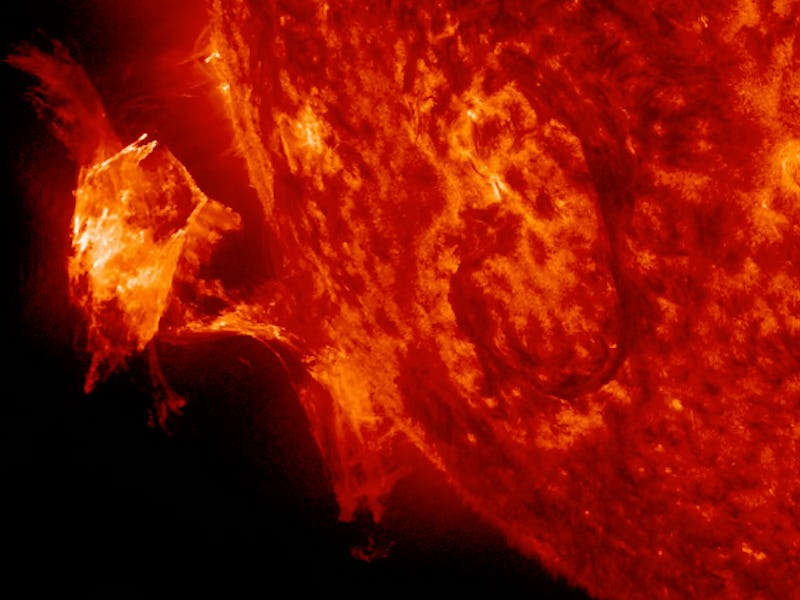Solar flares are awesome and beautiful — until you realize that they can wipe out Earth’s electrical field in a matter of seconds. That violent potential is why NASA is racing to understand them and prevent them.
In a process terrifyingly called “coronal mass ejection,” the sun erupts with extremely hot plasma across the solar system, creating highly magnetized winds. When these winds sweep past Earth, they can cause geomagnetic storms, or solar storms, distributing a flood of electrically charged particles across the ionosphere, triggering auroras at the poles. If a storm is large enough, it can disrupt satellites in orbit and even power grids on the surface, causing widespread blackouts and a loss in radio frequency.
After studying a less-severe solar flare event in February 2014, a team found that the charged particles appear in “patches” across the ionosphere, and in some parts a solar flare can cause a depletion of electrically charged particles. This reverse effect basically sucks electrons out of the ionosphere. The new discovery could help scientists map how solar flares distribute electrons across the ionosphere and improve radio and navigation to potentially prevent against the future flares.
Coronal mass ejections are hot spews of plasma erupting from the sun.
The research, published in Radio Science, comes at a pressing time. Massive coronal mass ejections hit Earth every 100 years or so, but the last big storm was the Carrington Event in 1859, before telephones were invented and electricity was a rarity. In other words, we’re long overdue. And even in those simpler times, the solar event was powerful enough to crash telegraph systems throughout Europe and spark and shock operators — which mean the results of a solar flare in today’s interconnected world could be devastating?
This fear of the unknown is driving the creation of high-tech monitoring systems. There are also new instruments in the works, like the Daniel K. Inouye Solar Telescope, set to be operational by 2020. When it ends, it will be the highest-resolution solar telescope in the world. In the meantime, however, scientists are racing against the sun to protect Earth from a catastrophic black out.
